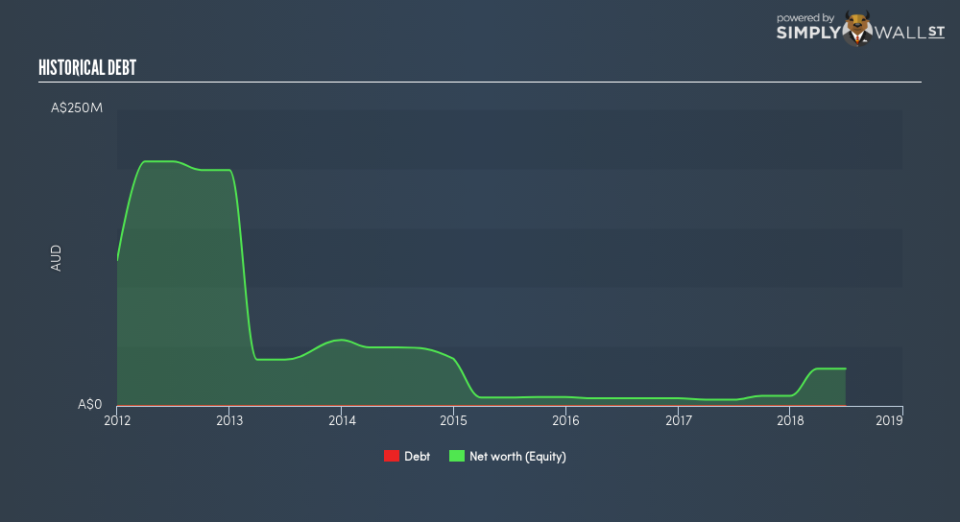What You Must Know About Calima Energy Limited’s (ASX:CE1) Financial Strength

Zero-debt allows substantial financial flexibility, especially for small-cap companies like Calima Energy Limited (ASX:CE1), as the company does not have to adhere to strict debt covenants. However, it also faces higher cost of capital given interest cost is generally lower than equity. While CE1 has no debt on its balance sheet, it doesn’t necessarily mean it exhibits financial strength. I will take you through a few basic checks to assess the financial health of companies with no debt.
View our latest analysis for Calima Energy
Is financial flexibility worth the lower cost of capital?
There are well-known benefits of including debt in capital structure, primarily a lower cost of capital. But the downside of having debt in a company’s balance sheet is the debtholder’s higher claim on its assets in the case of liquidation, as well as stricter capital management requirements. The lack of debt on CE1’s balance sheet may be because it does not have access to cheap capital, or it may believe this trade-off is not worth it. Choosing financial flexibility over capital returns make sense if CE1 is a high-growth company. Opposite to the high growth we were expecting, CE1’s negative revenue growth of -306% hardly justifies opting for zero-debt. If the decline sustains, it may find it hard to raise debt at an acceptable cost.
Can CE1 pay its short-term liabilities?
Since Calima Energy doesn’t have any debt on its balance sheet, it doesn’t have any solvency issues, which is a term used to describe the company’s ability to meet its long-term obligations. However, another measure of financial health is its short-term obligations, which is known as liquidity. These include payments to suppliers, employees and other stakeholders. With current liabilities at AU$1.0m, the company has been able to meet these commitments with a current assets level of AU$5.5m, leading to a 5.33x current account ratio. However, many consider anything above 3x to be quite high.
Next Steps:
As a high-growth company, it may be beneficial for CE1 to have some financial flexibility, hence zero-debt. Since there is also no concerns around CE1’s liquidity needs, this may be its optimal capital structure for the time being. Going forward, its financial position may be different. Keep in mind I haven’t considered other factors such as how CE1 has been performing in the past. I recommend you continue to research Calima Energy to get a more holistic view of the stock by looking at:
Historical Performance: What has CE1’s returns been like over the past? Go into more detail in the past track record analysis and take a look at the free visual representations of our analysis for more clarity.
Other High-Performing Stocks: Are there other stocks that provide better prospects with proven track records? Explore our free list of these great stocks here.
To help readers see past the short term volatility of the financial market, we aim to bring you a long-term focused research analysis purely driven by fundamental data. Note that our analysis does not factor in the latest price-sensitive company announcements.
The author is an independent contributor and at the time of publication had no position in the stocks mentioned. For errors that warrant correction please contact the editor at editorial-team@simplywallst.com.

 Yahoo Finance
Yahoo Finance 
